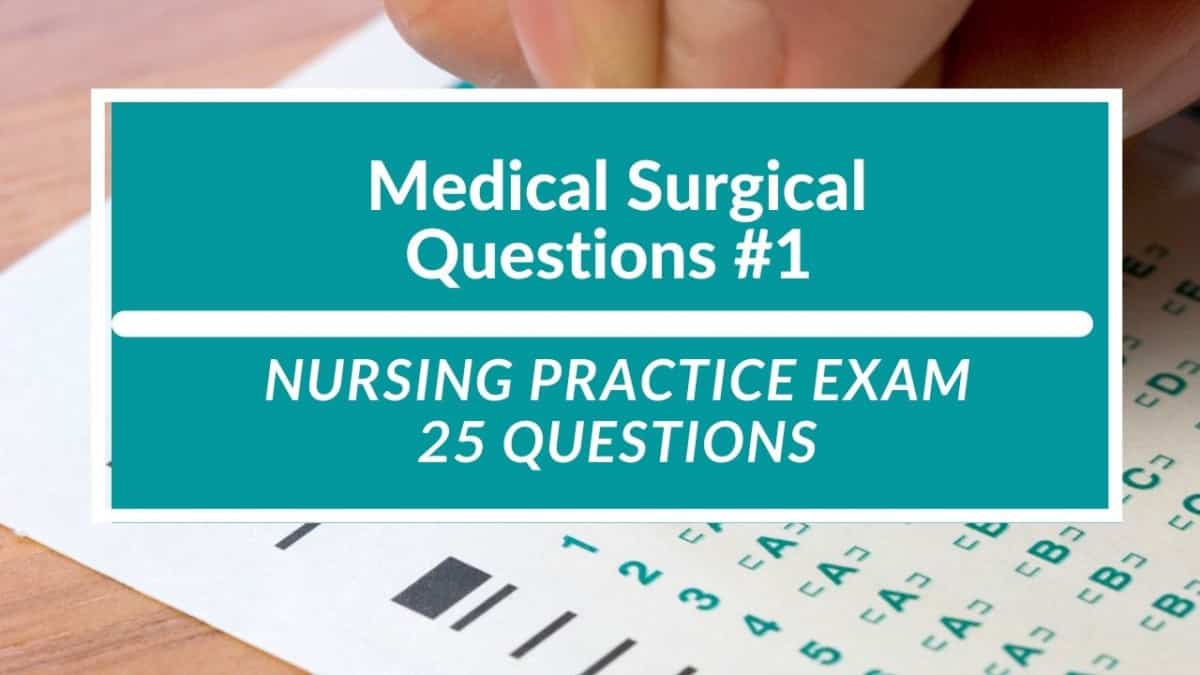Last updated on October 8th, 2021 at 10:00 am
NCLEX Nursing School Practice Exam
Medical Surgical Practice exam 25 questions
#1. A client exhibits signs and symptoms of acute heart failure. Which of the following blood tests is primarily used to detect cardiac damage?
#2. A patient shows signs and symptoms of acute myocardial infarction or MI. The physician prescribes a stat dose of morphine. The nurse understands that the main purpose for giving morphine to this client is to:
Answer: Lower the oxygen demand on the myocardium
Rationale: Morphine can be administered on a patient with MI primarily to reduce the myocardial oxygen demand, which then results in decreased blood pressure, heart rate, and venous return. Morphine may also alleviate the pain, cause sedation as it is a potent opioid. All these can cause a reduction of the patient’s anxiety levels.
#3. The physician orders an arterial blood gas (ABG) analysis for a patient with COPD in exacerbation. The nurse performs an Allen’s test prior to drawing the blood to ensure that which of the following circulation is adequate?
Answer: Ulnar
Rationale: An Allen’s test must be done to check the adequacy of the ulnar circulation prior to puncturing the radial artery and collecting blood for ABG analysis. Taking the radial blood without checking ulnar circulation may lead to severe ischemic damage to the hand if the radial artery is injured.
#4. A client who underwent a recent ileostomy procedure is admitted to the gastrointestinal unit. Which of the following acid-base disorders is the client most at risk for?
Answer: Metabolic acidosis
Rationale: Clients with ileostomy or enteric drainage tubes are at high risk for metabolic acidosis because they may lose intestinal secretions which are high in bicarbonate (an alkalotic substance). Patients who suffer from diarrhea are also at risk for metabolic acidosis due to the same reason.
#5. A female client presents with a productive cough and is suspected to have a respiratory infection. When obtaining a sputum sample from the patient, the nurse must instruct her to perform which of the following actions?
Answer: Take 3 deep breaths
Rationale: The client should be instructed to take deep breaths and then cough into the sputum collection container. She must not spit into the container as this may result in more saliva in the specimen and may cause a false negative result. Rather, the client must cough hard into the container. The specimen is ideally taken upon waking up in the morning, before eating or drinking. Rinsing the mouth is also ideal to prevent contamination.
Results
Last updated on October 8th, 2021 at 10:00 am
Last updated on October 8th, 2021 at 10:00 am

